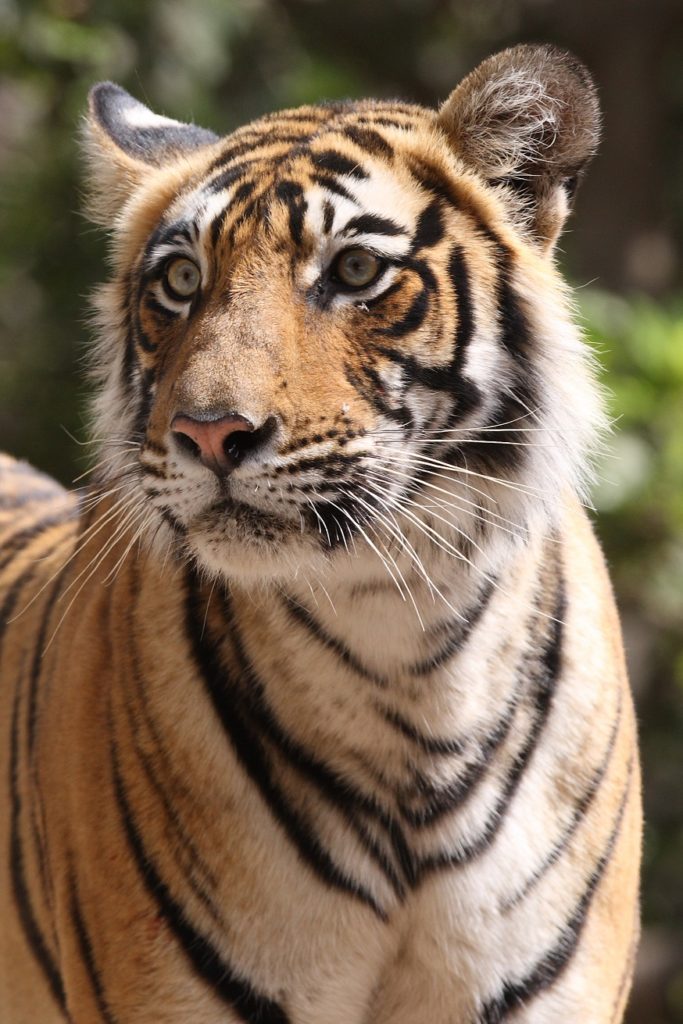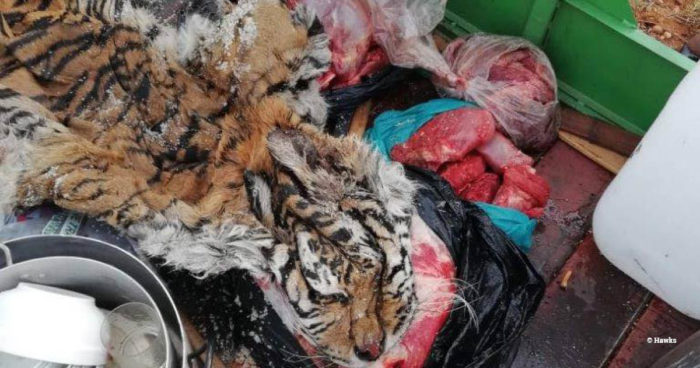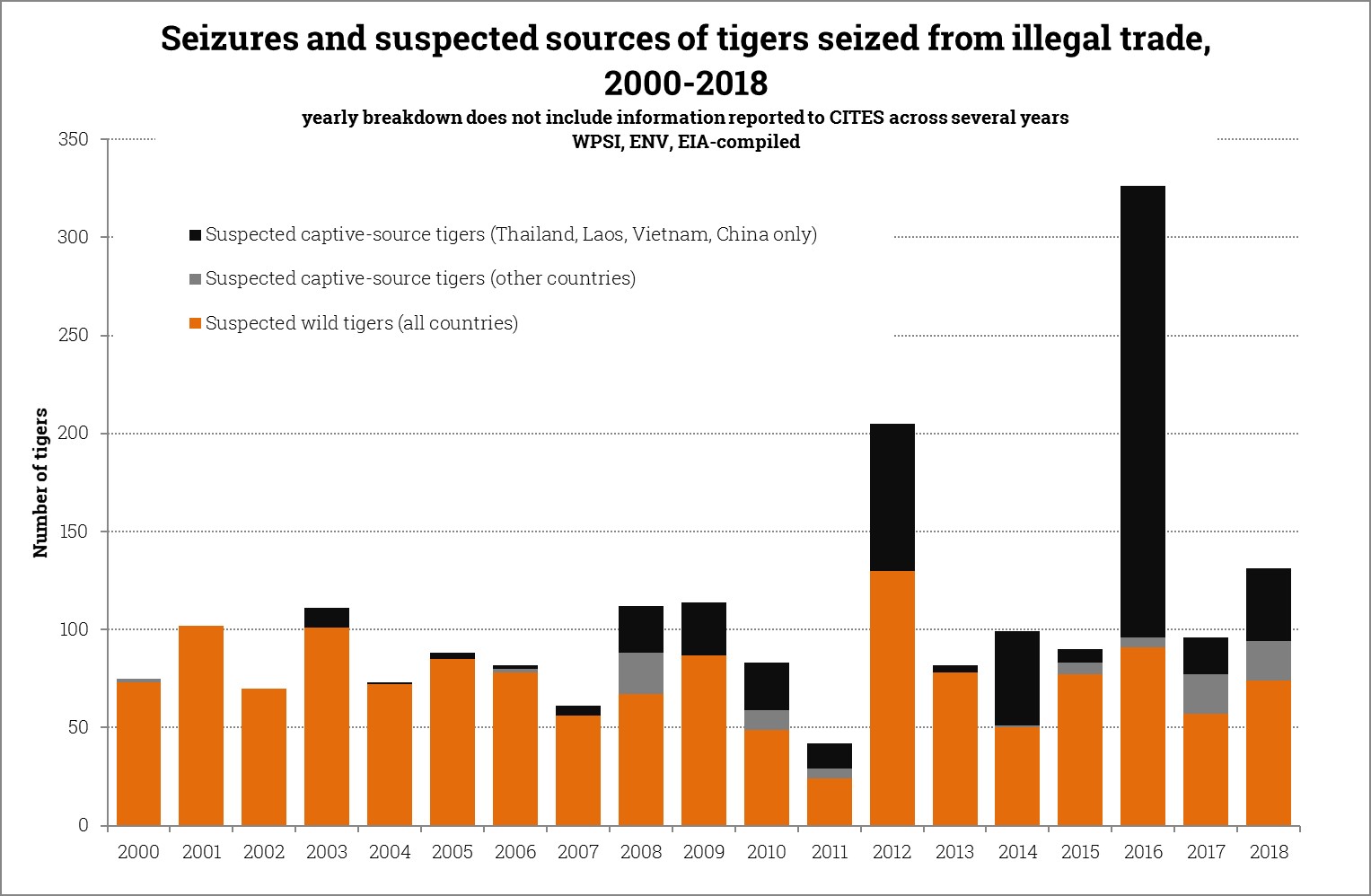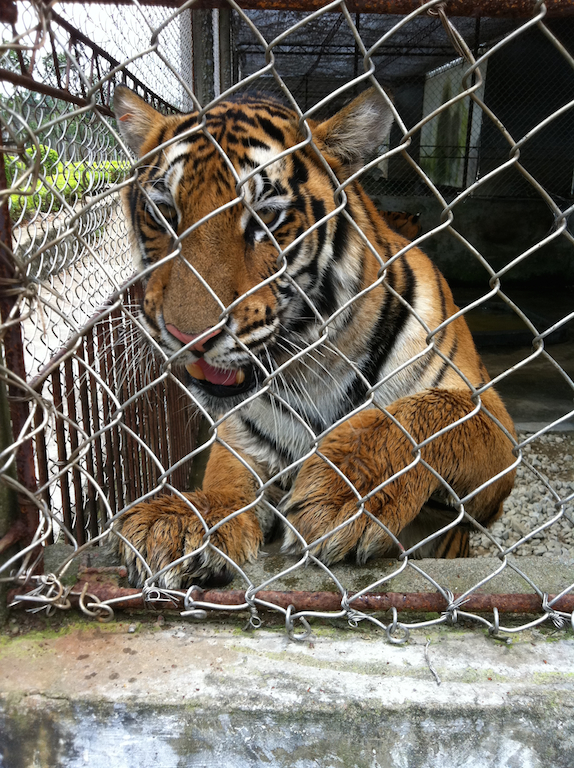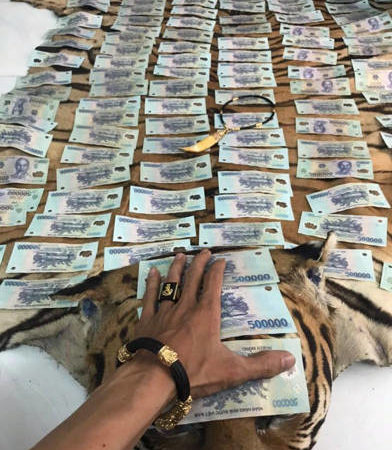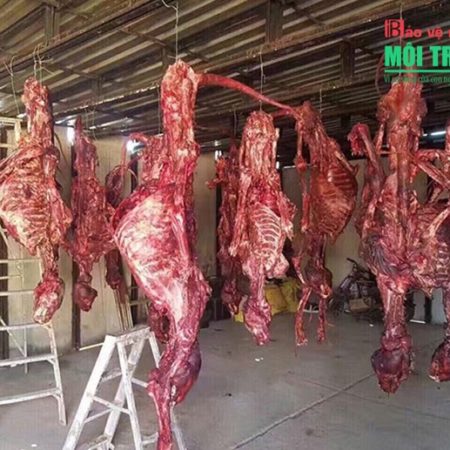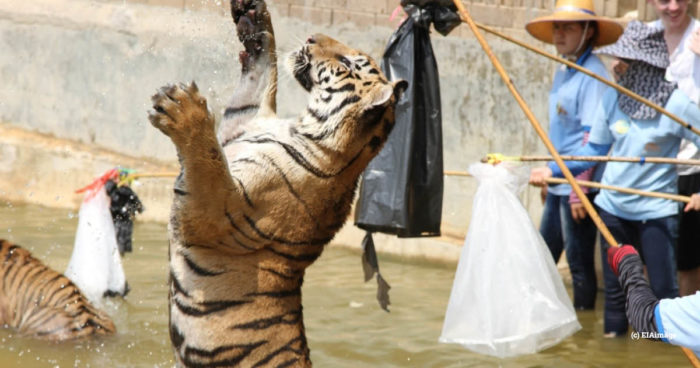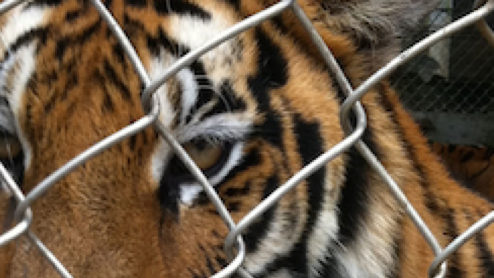On Global Tiger Day 2019, governments must take action to save wild tigers on the brink
To mark Global Tiger Day 2019 (29 July), we have released updated interactive maps of tiger crime incidents and facilities keeping them in captivity, giving insight into the existential crisis currently facing Asian big cats.
There are fewer than 4,000 wild tigers on Earth today. While populations may be stable in some parts of their range – notably in some areas of India – these are sadly the exception.
Tigers evolved to play a vital role as apex predators in ecosystems across Asia, from the valleys of Iran and boreal forests of the Russian Far East, through China to the tropics of Sumatra, Malaysia and Indochina. Already gone from much of this area, the last tigers in South-East Asia now face a poaching crisis of grave proportions, driven by rampant demand for and trade in their body parts.
Earlier this year, Myanmar announced its wild tiger population stood at just 22. Malaysia drew attention to a poaching crisis driven by Vietnamese gangs; it has fewer than 200 wild tigers remaining, down from an estimated 500 a decade ago. Meanwhile, Cambodia has lost its wild tiger population entirely and if any tigers survive in Laos and Vietnam, they are too few to represent a viable population.
The main threat to wild tigers across the rest of their range is poaching for their body parts, primarily among Chinese consumers, and this shows no signs of abating. According to data collected by the Wildlife Protection Society of India (WPSI), 31 tigers have been killed or traded in India in 2019 to date, compared to 34 in 2018 and 27 in 2017. While these numbers may seem relatively small, killing at this rate has a huge impact on India’s fragmented tiger populations.
Tigers and tiger parts seized from trade
Seizure records collated by EIA and partners offer some insights into the trade driving wild tigers towards extinction. In total, this dataset represents a minimum of 2,114 tigers seized from illegal trade since 2000; approximately half of these are depicted on our interactive map.
As this dataset reflects only those incidents successfully intercepted by law enforcement and then reported, it is not comprehensive and likely reflects only a fraction of the true number of tigers in trade. Nonetheless, it offers some striking insights.
For example, very few seizures have been reported from known trade hubs. Meanwhile, seizures of tiger skins in South Africa, and of tiger bone in China originating in South Africa, indicate that poorly regulated breeding and trade of tigers in that country is serving to exacerbate transnational illegal trade.
Some tiger body parts feature far more prominently in seizure data than others, suggesting differing ease of concealment or law enforcement focus. For example, the number of tigers represented by seizures of teeth and claws is far lower than the number of skins seized, despite their prominence in illegal trade – tiger teeth and claws are widely available in physical market places and, particularly, online. This market has nothing to do with traditional medicine, with teeth often offered set in silver and gold with gemstones and sold as a luxury trinket.
The data also offers indications as to how trade flows of tiger parts and products converge with other illegal wildlife trade – there are at least 90 examples of seizure incidents in the trans-Himalayan region (India, Nepal, Bhutan and western China) in which tigers have been seized alongside leopards, snow leopards or clouded leopards. Meanwhile, in China, tiger parts and products are frequently seized alongside wildlife likely of African origin, including elephant ivory, rhino horn and lion (in at least 35, 18 and 15 cases, respectively). Other wildlife seized alongside tiger parts include the parts and products of deer, bears and pangolins (at least 67, 59 and 36 examples, respectively).
Trade in captive-bred tigers
Approximately 42 per cent of tigers seized from illegal trade since 2010 are suspected to have come from facilities ranging from farms explicitly set up to breed tigers for trade to facilities masquerading as zoos or tourist attractions, through which tiger parts are traded out the back door. The data in the chart above is skewed by the 2016 seizure of 148 live tigers, 70 tiger cub carcasses and two skins from the notorious Tiger Temple in Thailand.
As suggested by the continuing trafficking of wild tigers into countries where large numbers of tigers are held in captivity, trade in captive-bred tiger parts has not alleviated pressure on wild tigers. Instead, a consistent consumer preference for wild tiger bone indicated by consumer surveys conducted in China – along with higher potential profit margins from poaching wild tigers – mean that trade from captive facilities cannot satiate demand but instead serves to stimulate it and complicate law enforcement efforts.
More than 8,000 captive tigers are kept in China, Laos, Thailand, Vietnam and South Africa – all countries of concern for trade in parts of captive-bred tigers; our updated map of captive tiger facilities shows that despite pressure on these countries to deal with their captive tiger problem, the situation is getting worse.
Under a project funded by the UK Government through its Illegal Wildlife Trade Challenge Fund, our partner Wildlife Friends Foundation Thailand has identified at least 57 private facilities holding tigers, a large number of them unknown to the authorities and many aimed at tourists. The seizure of 72 dead tigers and other tiger products from the Tiger Temple in 2016 demonstrated how tourist facilities may be contributing to illegal trade.
In 2016, the Government of Laos announced it would close all tiger farms in the country – yet the number has increased, with new facilities set up in 2017 and 2018. At least six facilities hold tigers in captivity, all associated with businesses and individuals linked to trafficking of wildlife from Asia and Africa. Tiger trade is still happening through tiger farms supposedly converted into tourist attractions, as revealed in a Washington Post article from May this year. Just last week, seven dead tiger cubs were seized in Vietnam, having been trafficked across the border from Laos.
Huge quantities of tiger parts are being traded in Vietnam, both from the wild and captive facilities. Our new report Running Out of Time highlights major failures in Vietnam to tackle wildlife crime, including tiger trade. The images below are just a few examples of tiger carcasses and body parts offered via social media in Vietnam. Our investigators encounter images such as this every day.



